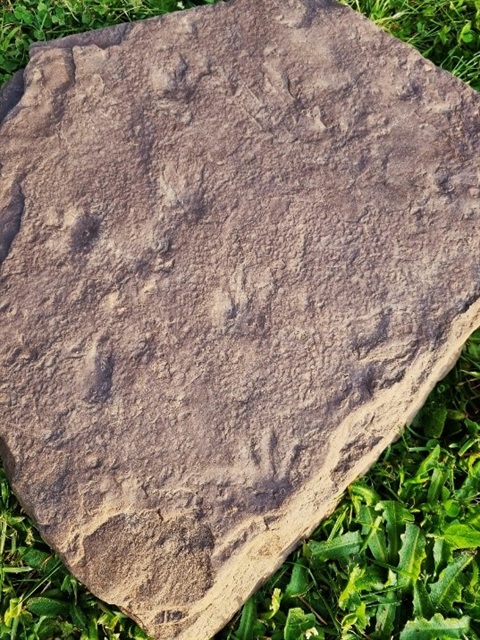Ground breaking discovery at Mansfield
Published on 16 May 2025

Mansfield Shire is now on the map with a ground-breaking discovery of the earliest known ‘reptile’ footprints found in Mansfield Shire.
Mayor Cr Steve Rabie praised the community members who had first discovered the footprints of what had previously been considered a clawless primitive amphibian.
“This has redefined what we know about how humans have evolved and it has happened right here in Mansfield,” said Cr Rabie.
“This doesn’t happen by accident. We have incredibly intelligent and interested community members who have centred their attention on chipping away at the evidence that Mansfield Shire holds the key to our evolutionary history.
“I commend the community members, particularly Craig Eury and John Eason, who took it upon themselves to search for the ‘holy grail’ of evidence and then steward that discovery to where it is internationally recognised.
“The fact that this has been published in the world’s leading peer-reviewed science journal shows their dedication to holding the discovery carefully and ensuring its profound impact is felt fully in the world community,” said Cr Rabie.
John Eason, co-author of the article in Nature magazine, said the tracks dated to around 356 million years ago. He encouraged people to look in their own backyards for their own paleontological discoveries.
“Purplish-brown mudstone from the Broken River is everywhere in Mansfield.
“Today’s rock surfaces are covered with innumerable ‘trace fossils’ – ripples, worm burrows, foraging marks, dried mud cracks and plant debris.
“There is a good chance you will find some if you have a rock wall or paving-stones in your garden,” said Mr Eason.
“We have found the footprints. There have got to be fossil remains out there somewhere.”
Mayor Cr Steve Rabie added that this would bring life to another era in Mansfield Shire’s rich history.
“Council is pleased to have partnered with stakeholders, including John Eason, for many years to help steward the vision of bringing Mansfield’s prehistoric significance to light.”
“We’re excited to be able to share this with the community on full at the future heritage museum as part of our rich paleontological, first nations and European history.”